The First in a Series of Articles on the Shoreline "Restoration" Taking Place in Oxford, Maryland
The little town of Oxford was once called the "colonial capital of Maryland." Since its existence in the 1600's, its shoreline on the Tred Avon River, a tributary of the Chesapeake Bay, has supported many watermen who worked on the water throughout the year. In more recent times, its beautiful streets, especially the Strand which rises from the river, have attracted tourism. Not the big, flashy tourism of shop filled towns like St. Michaels or crowded beach towns such as Ocean City, but the quiet, peaceful tourism of a town where one can walk the streets without bumping into others or fighting traffic.
The aforementioned Strand shoreline was one of the hallmarks of this tourism. One could walk along the small sidewalk above the stone abutment that holds back the river or sit in a lawn chair and watch the boats go by or be amazed by the amazing sunsets. At the end of the Strand was a tiny beach that attracted families in the summer.
No more.
Nowadays, people are riding up and down the Strand to view something else. The town administration is calling it the "Oxford Shoreline Improvements." It's being done on two million dollars worth of grants from the Maryland Department of Natural Resources and the National Wildlife Federation. From where many people sit, these don't look like improvements at all.
Here is how the Oxford Shoreline looked prior to the project. This picture was taken from the Town's website.

Beautiful, isn't it?
Here are some others:

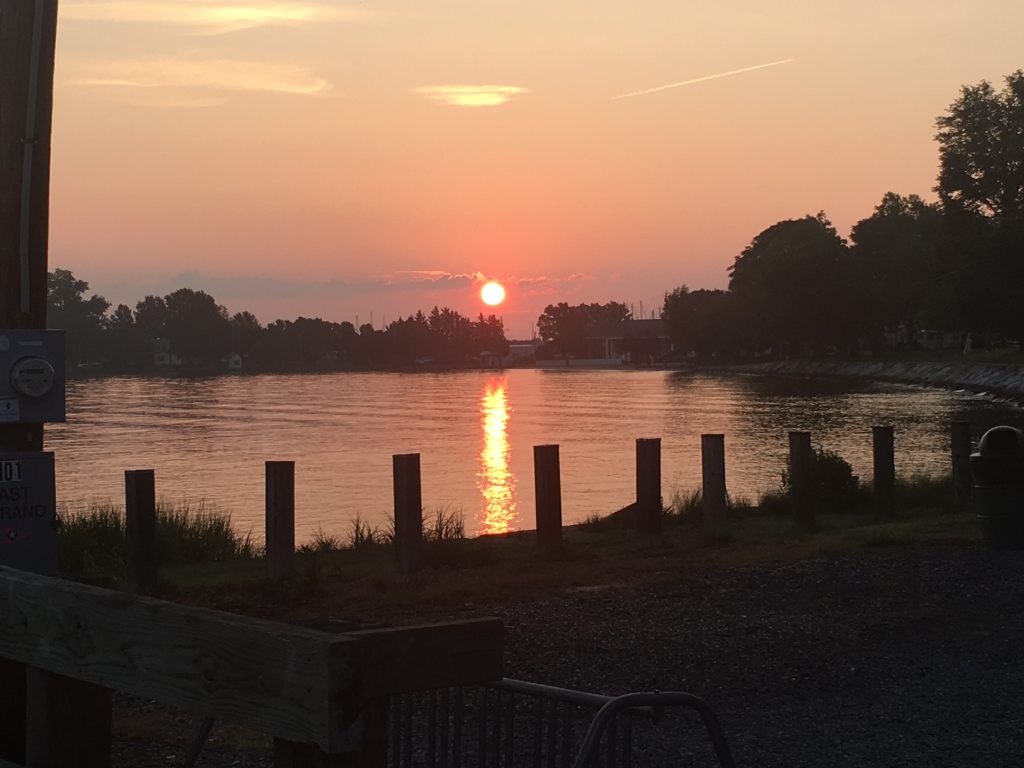
Here is what it looks like now as the project begins.
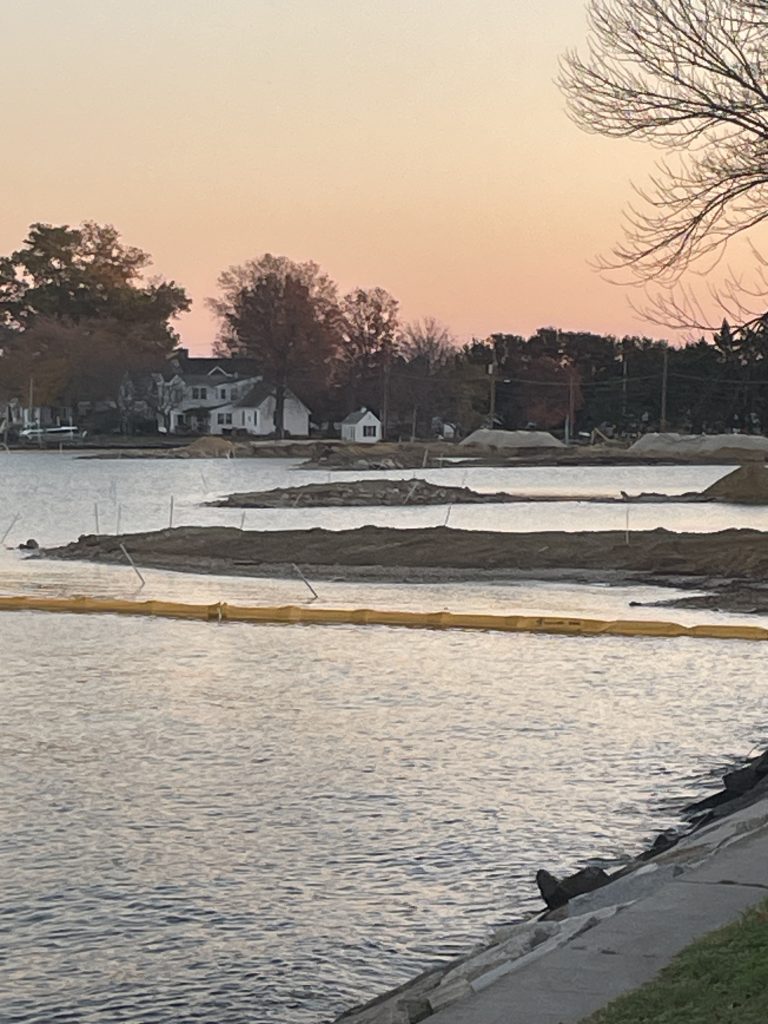



Sand dunes next to the road and extension of the sand beach well past where it had been.

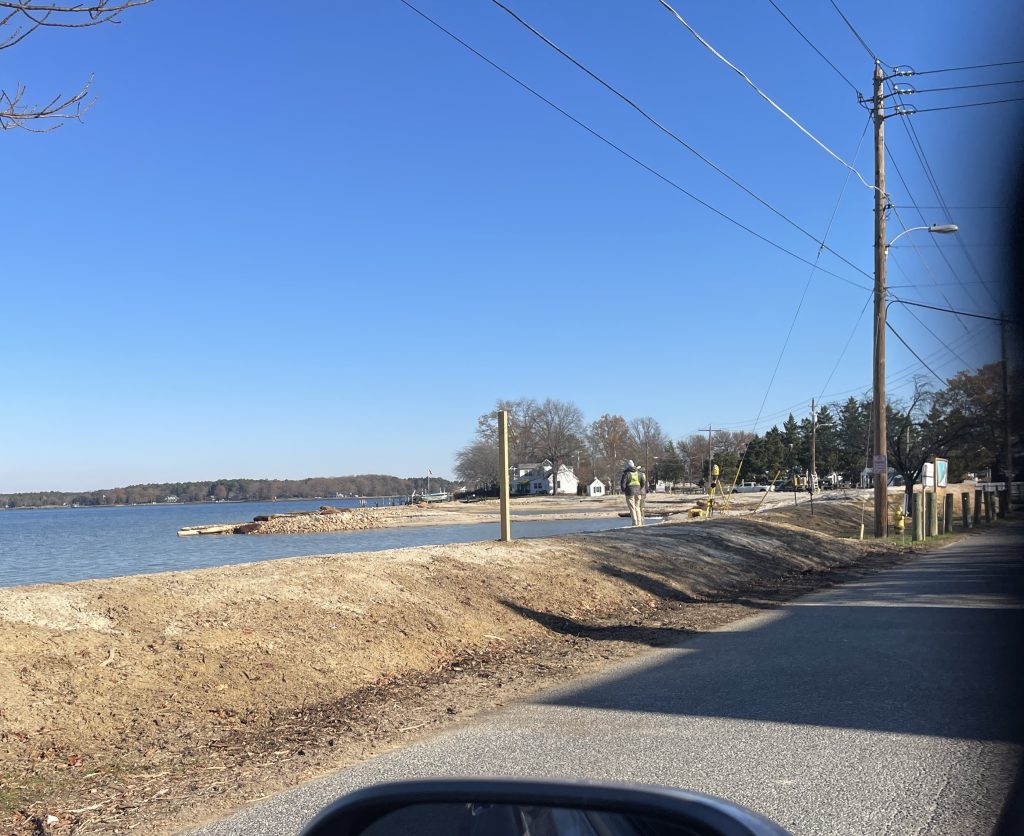
More extension of the beach and creation of huge dunes.
This is what that once gorgeous shoreline looks like now.
While many of the above pictures were taken while work was being done, here is the "concept picture" of the "Dynamic Living Shorelines" project funded by a grant from the Department of Natural Resources and the National Fish and Wildlife Foundation. This is the project that will change, and destroy, the iconic Strand of Oxford forever. As the Oxford Town Manager said, "The living shoreline and breakwaters will give us the ability to push the land out a little bit." This will provide more beach area, crowds, and a sandy expansion most people in town, especially the Strand, don't want.
As one homeowner said, "I didn't buy my home to live near a beach."
Concept (36x60) (oxfordmd.net)
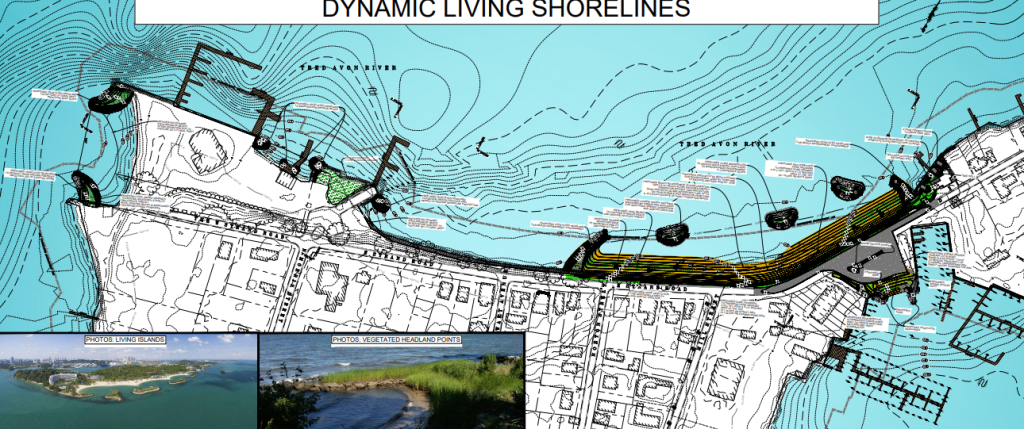
This picture shows the addition of a long jetty and then what are called " Living Islands" in front of a large sand dune and an extension of the beach. In reality, the beach will stretch farther than what is depicted in the picture above. Here is an enlarged picture of this concept as created in other locations:

"Living Islands" is the latest thing in shore restoration. No more do designers merely want to prevent destruction of the shore, now they want to create "natural" solutions that totally sculpt the shore into something nature didn't create. That, of course, means artificial manmade islands that are anything but natural.
No more of Oxford's beautiful uninterrupted waters occasionally populated by sailboats.
Why is this being done? It's partially the fear of "sea rise" and "climate change." Or at least that is the reason they give.
From the Oxford webpage description of the project: Due to sea level rise and increasing storm intensity, this area of Oxford has taken a beating over the last many years raising multiple concerns, from the continuation of one of Oxford’s most valued assets, its historic sandy beach, to protection of critical public infrastructure, including the road, water, sewer, electricity, telephone and cable, the ability to provide emergency services during tidal and storm events, and the ability to protect historic residential and commercial properties from the encroaching waters.
After reading this, one would think that the Strand area is the only area in Oxford that suffers consistent tidal flooding. This is untrue. More on that later.
In a town meeting in 2021, the Town Manager stated that this project will not achieve the goal of stopping town tidal flooding.
From January 2021 Oxford Town Commissioner minutes: It was noted this project would not prevent elevated tidal flooding, which takes place on the backside of the Strand parking lot and along private properties, the project is intended to reduce damage to the exposed northern side and the fragile infrastructure found along this northern edge. Commissioners-Minutes-012621.pdf (oxfordmd.net)
Seems like extreme actions when it won't prevent "elevated tidal flooding" but will merely "reduce" damage to the exposed northern side. One may assume that is the beach and the private property at its end. An Oxford landmark destroyed for little return and at the expense of other, more needy parts of town. An improvement to a private property provided by public grant funds.
From a February, 2021 Oxford Town Commissioner's Meeting: She (Town Manager Cheryl Lewis) also noted that the town experiences tidal and stormwater flooding throughout town and that this project is only looking at the northern edge of the town and the solutions developed here will not solve all of the town’s problems. This project is just one piece of a bigger picture and is one-step towards the preservation of the town for the next 50 to 100 years. She explained that a good deal of effort is spent convincing State funders that Oxford intends to be around in 100 and 200 years, and that after the first 300 years there is no plan to throw in the towel now. Sea level rise is going to require a lot of adapting in order for Oxford to continue to exist in the future, and with 330 years of past success, forwarding thinking planning only seems natural. Commissioners-Minutes-020921.pdf (oxfordmd.net)
It's curious that the Town Manager stated that the town had "no plan to throw in the towel now" and that "state funders" had to be convinced of that. I wonder if not throwing in the towel includes destroying landmarks just to get state funding.
The implication is that there will be more projects to come, but it seems those projects have been bumped to the back of the line while this one has taken precedence. It's odd that the flooding of the end of the Strand wasn't a major focus for the town until about 2018, right about the time the Maryland Department of Natural Resources was ready to give Oxford big money for a solution of this type.
Was this project a "solution" looking for a problem? Is it an expensive test case that will be used as advertising for others? Are the citizens of Oxford participating in a big environmental experiment without knowing it?
Grant writers, developers and government agencies like the Maryland Department of National Resources love solutions like this one. They like big, intrusive plans that cost tons of money and create drastic change. They like showy projects that get the attention of people who don't have to live with them. A few projects like Oxford's can generate more projects in the same mold, thus more money.
Let's not forget the money those in the shoreline/environmental restoration business like Underwood and Associates make from offering these over designed projects exchanging beautiful shorelines for a jumble of unnatural islands and breakwaters. They are attractive to the crowd who applauds projects that supposedly protect nature while actually destroying what was created naturally. These are projects businesses and government agencies can take pictures of to advertise to other costumers. These are the projects that get town administration publicity, like in this National Wildlife Federation Blog:
The strangest statement of the National Wildlife Federation article is the statement, "Oxford intends to be around in 100 and 200 years, and that after the first 300 years there is no plan to throw in the towel now." I'm not sure where that statement came from or why Lewis decided to include it, but it seems she is trying justify this drastic destruction of the historic Strand to save the town hundreds of years in the future. It's amazing the town survived over 300 years without intervention, isn't it?
Other parts of town that are actually flooded during heavy rains have no current plans or grants in the works for their restoration or protection. It's as though they don't matter. Ask anyone in the "Park" section of town or those living on Bank Street, Pier Street, Mill Street and Tilghman Street who have dealt with tidal flooding consistently over the past 40 years. Most notably, the Causeway, the main entrance to the town, floods at high tides, full moons and during heavy rain. Response from the Town of Oxford? A few promises of fixes in the future and mostly crickets. After all, the town needs to save the Strand Beach at all costs. The citizens? They are told they should lift their houses and buy more flood insurance.
Flooding on Bank Street in Oxford

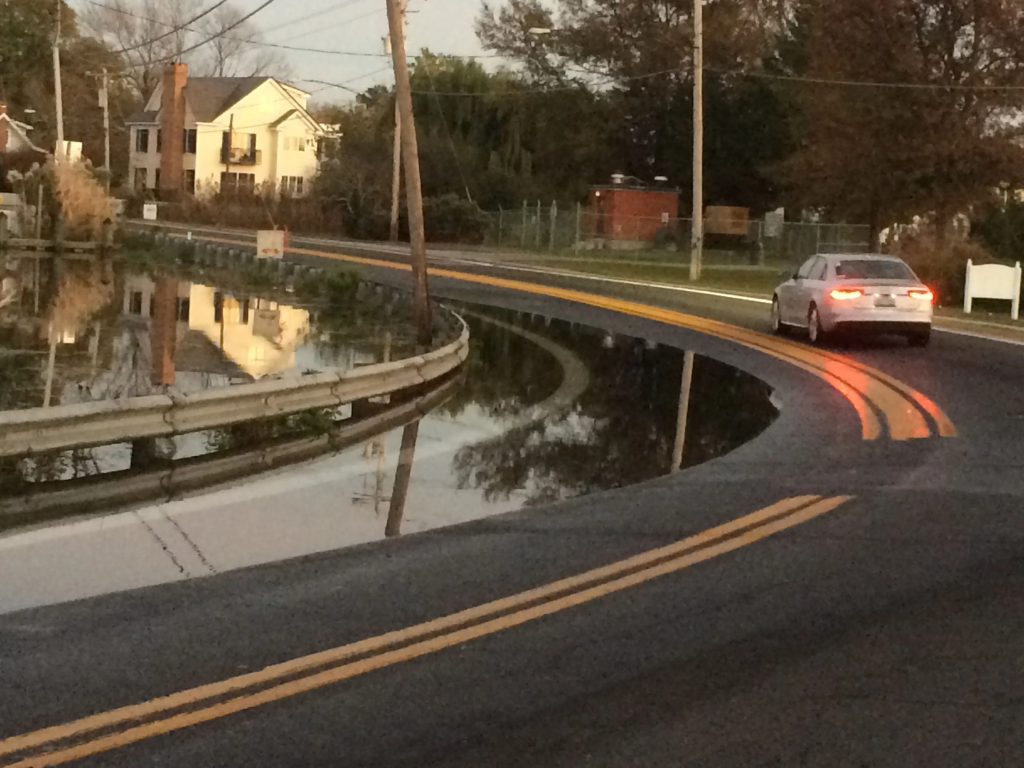
Mild Flooding at the Causeway- it usually crosses the road. This is the main entrance to town.
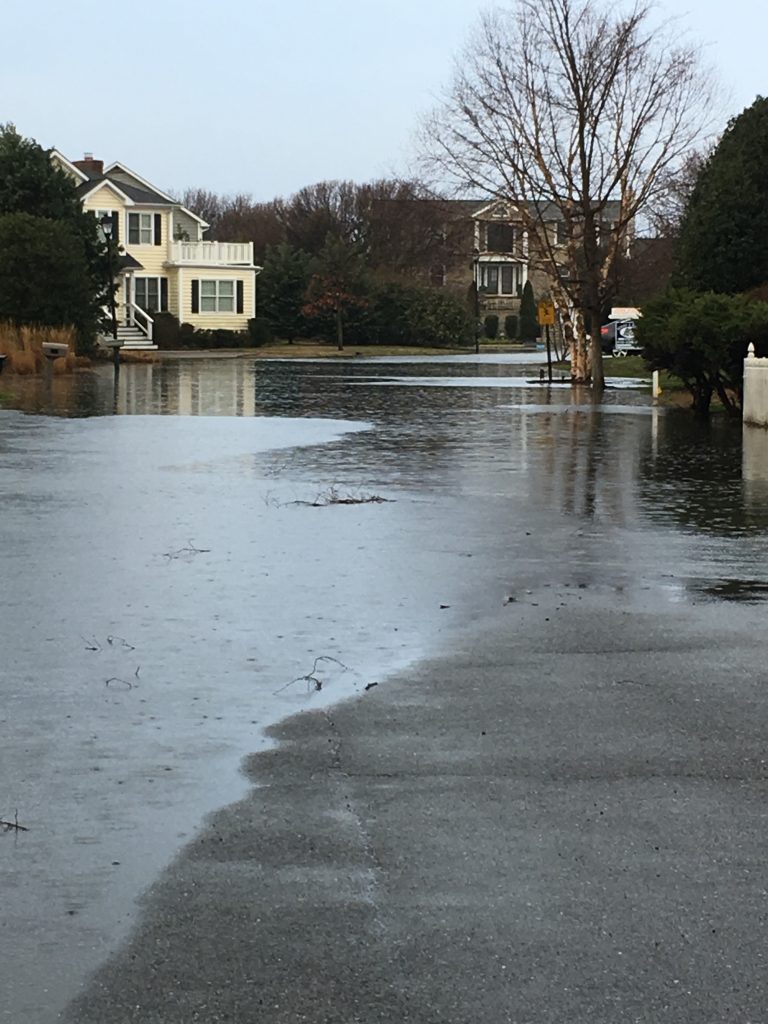
Pier Street
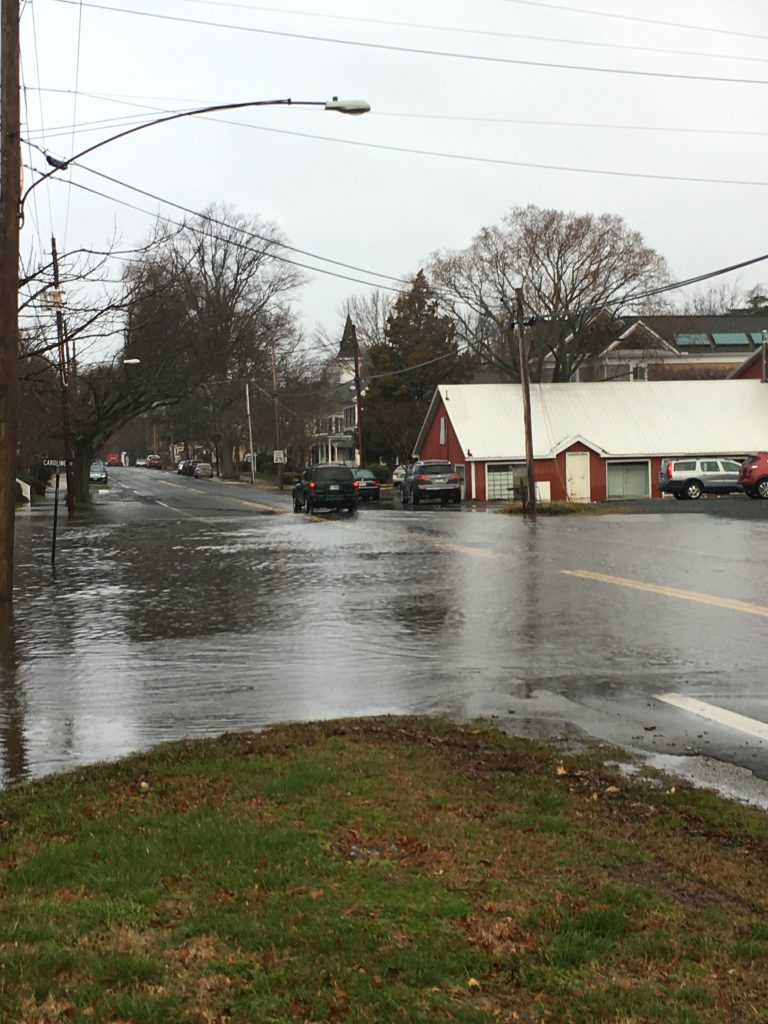
Intersection of Morris and South Morris Street
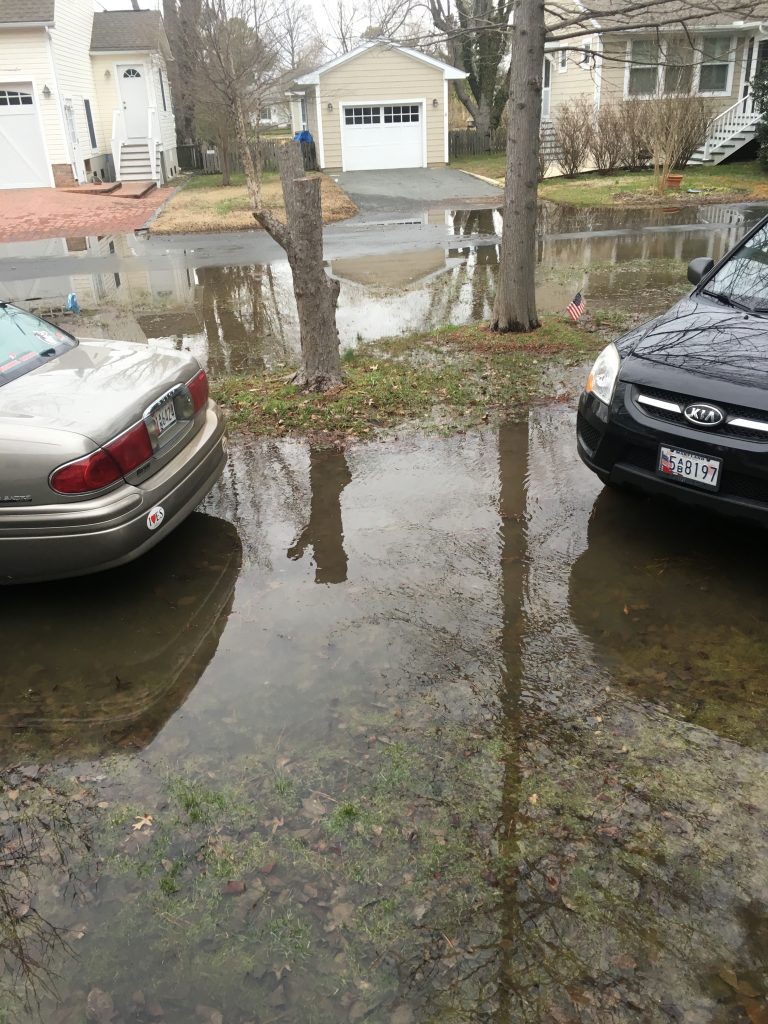
Willows Avenue (area of the town known as "the Park.")
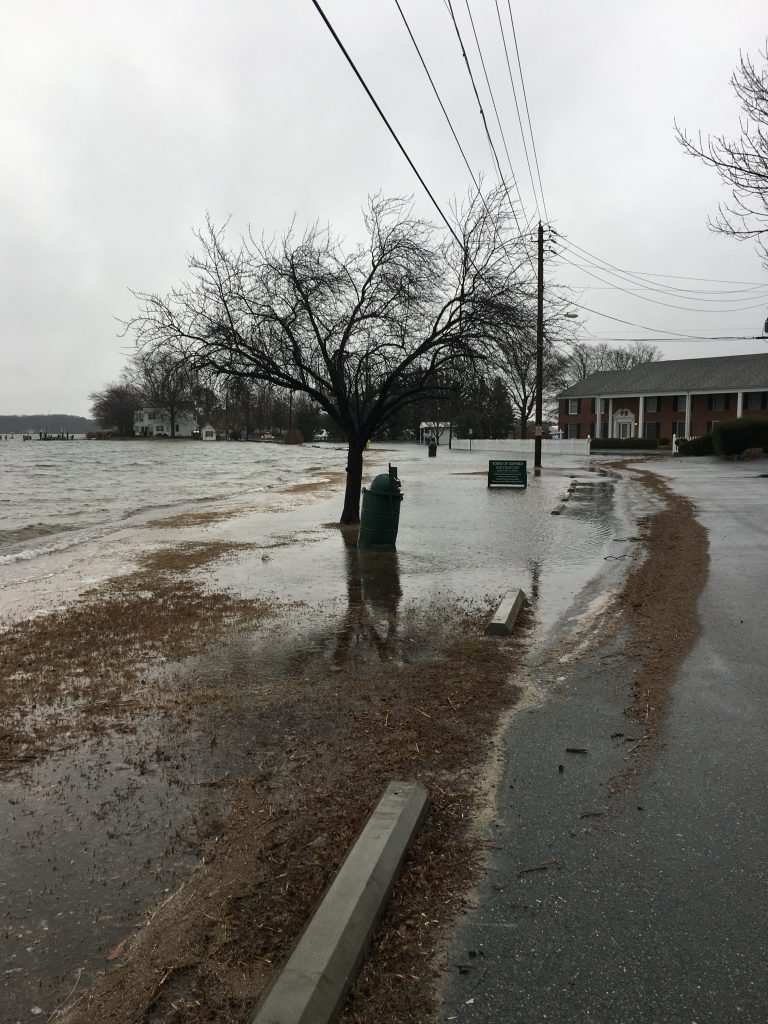
The Strand (2018)- The Strand does flood, but mainly during large storms and not nearly as much as the rest of the town.
In the NWF article Lewis acknowledges that there were other options available:
You have people that are fine with a nature-based approach, and just as many who say something like a sea wall would work a lot better. And sure, a sea wall might work well under some circumstances, in some places. But there are things we need in Oxford that hardened infrastructure like that just wouldn’t provide—first and foremost, protection of our public beach.
I thought the point was to prevent flooding and infrastructure destruction. Clearly, she thinks the beach is the most important thing. After all, it is now being extended well past where it originally was.
Many in town disagree with the "living islands" approach. One longtime resident stated, "The problem could have been solved by lifting the roadway of the Strand, the parking lot, and strengthening the bulkhead on the wall with additional rip rap where the beach is."
Another description of the project:
In coordination with the town’s partners in this project, Maryland Department of Natural Resources Coastal Restoration Services, the National Wildlife Federation and the awarded engineering firm, Underwood and Associates, the town has developed designs that will incorporate natural marshy areas to act as breakwaters in protecting the Strand, along with dunes to prevent waters from overrunning the road and is currently submitting these designs for permitting review by state and federal agencies for future construction.
I'm not sure they understand the meaning of "natural." According to the dictionary, it means, "existing in or caused by nature; not made or caused by humankind." The marshy areas being created, along with the five foot "dunes" mentioned, would not naturally occur at this spot on the Strand.
As for sand dunes, they can cause as many problems as they may potentially solve. First, the establishment of sand dunes is a time-consuming process. This means that newly placed dunes will be subject to as much or more erosion as the original shoreline. They require constant maintenance and replenishment, which is expensive for communities to fund. There are limited plant options available in harsh climates and the dunes themselves may disrupt and destroy the natural habitat of some species.
Even the man made "living islands" will require monitoring to make sure they actually work and withstand "sea rise." Once again, they must be maintained perpetually. Will the Town of Oxford perpetually be bound to sand dune and "living island" protection costs? It's a strong possibility.
Moreover, pumping millions of cubic yards of sand onto beaches can cause environmental damage, according to decades of studies. It kills wildlife scooped up from the ocean floor and smothers mole crabs and other creatures where sand is dumped, said Robert Young, a geology professor at Western Carolina University.
It seems this small area has been deemed a priority in the continued fight against flooding in Oxford while much larger and crucial areas which are consistently flooded and affect so many more people are virtually ignored or put at the end of the timetable.
Why was this project chosen first? After all, shouldn't there be a comprehensive town plan to manage flooding that lists priority areas like the Causeway and the area of the Post Office?
The survey below regarding flooding in Oxford, conducted in 2012, doesn't even mention the Strand as a flood concern or a concern at all. Odd that Lewis conducted and commented on these responses but then went on to promote the Strand as a priority in 2018. What were the real priorities for this decision? Money? Tourism? Notoriety?
Oxford Stormwater and Flood Management - M.MOAM.INFO
The Town Manager sold the concept to the Commissioners, and they voted to approve it on April 27, 2021. Citizen participation at the meeting was severely limited to virtual by the restriction against live attendance at town meetings due to "Covid."
Motion passed. Commissioners-Minutes-042721.pdf (oxfordmd.net)
On that day, the Town of Oxford, whose quiet beauty has brought tourists here for years, had its beautiful Strand needlessly destroyed.
One lifetime resident addressed this work on the Strand, " Remember this; hunting for sea glass, wading with your kids, swimming even at low tide...no longer. Now you will have walking up and over berms, no more sea glass and probably not a chance to fish anymore. The bulkhead where people tried to fish is now buried. "The Strand" is no longer the iconic historic area it used to be."
One wonders why there wasn't a less destructive solution than the one currently employed, one that would maintain the strand shoreline and its character while still protecting that section of the road, the parking lot etc. from flooding. Lack of imagination? Apathy to the beauty of The Strand and what it means to the citizens of Oxford?
I was once told that many bureaucrats consider themselves special people who think that they, and they alone, know what is right for the people they serve. They don't even feel they need to listen to the public or solicit ideas from the people they serve. It's a very special kind of arrogance. As a local bureaucrat once said, " I can tell these people anything, and they will believe it and go along with it. "
Time to stop going along with it. It is probably too late to save our beloved Oxford Strand. Maybe we can save other iconic parts of Oxford from this type of destruction.
NOTES: The next few articles in this series will examine the history of this project, why certain decisions might have been made and the consequences.
Did anyone do a traffic study that a larger beach will bring?
I requested an Engineer Traffic Study to be done in the summer 2024 for Tilghman St and The Strand speeding and sidewalks at the last Town meeting. I submitted a proposal and it is up for Commissioner approval at the December 12th meeting as far as I know.
Will, we really appreciate the work you are doing.
Not to mention parking and disruption by "beach goers." Maybe we can put up additional signs begging people to be "nice" and respect our town. I feel for the people on the Strand who will have to deal with this circus.